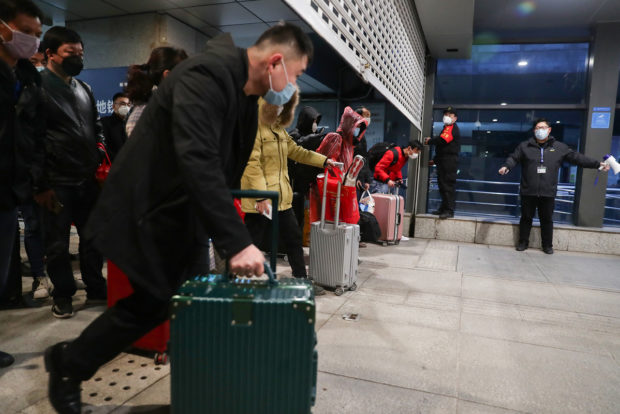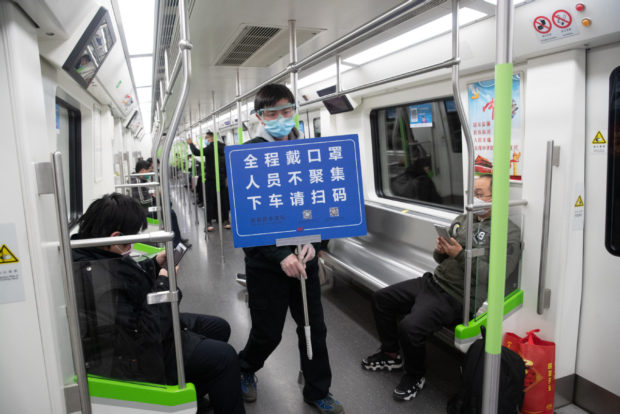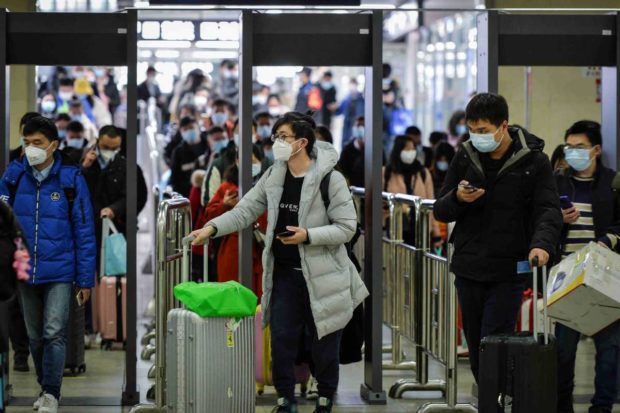Subways in Wuhan resume operations

Wearing masks, passengers enter the subway station in Wuhan, Central China’s Hubei province, as the city resumes rail transportation after a two-month suspension, on March 28, 2020. (Photo by Ke Hao/chinadaily.com.cn)
WUHAN — Wuhan in Hubei province, the city hit hardest by the novel coronavirus pneumonia outbreak on the Chinese mainland, resumed operations of its subways on Saturday after a suspension of more than two months due to the epidemic.
Six metro lines started reopening to the public as part of the city’s efforts to resume normal production and life as authorities have declared the transmission of the virus in the city has been “basically blocked”.
Residents are asked to wear masks to take subways. Before getting into the subway stations, they are also required to scan the QR codes through widely popular mobile apps that are registered by real name so that their travel histories can be tracked. When they get off the train, passengers will have to scan the QR code posted in the carriage again in order to track which carriage they take.

Passengers take subway in Wuhan, Central China’s Hubei province, as the city resumes rail transportation after a two-month suspension, on March 28, 2020. (Photo by Ke Hao/chinadaily.com.cn)
Infrared thermometers are installed in the security check area to monitor passengers’ temperatures. Those who have normal temperatures are allowed to get in, otherwise they will be subject to further temperature checks or quarantine.
Security employees are sent on every train to guide passengers and provide them with necessary services.
Article continues after this advertisementJin Jing, head of the Hongshan Square Station, said all public areas and facilities in the station have been thoroughly cleaned up and disinfected before the subway restarted operation.
Article continues after this advertisementThe station has been ready to resume the hustle and bustle by taking additional measures to protect passengers’ safety, Jin said.

A staff member holds a notice board to remind passengers to wear masks, keep distance and scan a QR code on a subway in Wuhan, Central China’s Hubei province, as the city resumes rail transportation after a two-month suspension, on March 28, 2020. (Photo by Ke Hao/chinadaily.com.cn)
Wuhan only reported one newly confirmed case of the novel coronavirus disease since March 18. Liu Dongru, deputy head of the provincial health commission, told a news conference on Friday that the city has had its coronavirus risk evaluation downgraded from high risk to medium risk.
According to the risk criteria defined in a guideline issued by China’s State Council, cities, counties and districts with no newly confirmed cases in the last 14 days are categorized as low-risk areas. Those with fewer than 50 cases or those with over 50 but without a concentrated outbreak are classified as medium-risk areas. And those with over 50 cases as well as a concentrated outbreak are classified as high-risk areas.

Passengers wait to take subways in Wuhan, Central China’s Hubei province, as the city resumes rail transportation after a two-month suspension, on March 28, 2020. (Photo by Ke Hao/chinadaily.com.cn)

Passengers wait to take subways in Wuhan, Central China’s Hubei province, as the city resumes rail transportation after a two-month suspension, on March 28, 2020. [Photo/Changjiang Daily]

Passengers wait to take subways in Wuhan, Central China’s Hubei province, as the city resumes rail transportation after a two-month suspension, on March 28, 2020. (Photo/Changjiang Daily)

This aerial photo shows a Wuhan Metro Line 1 train passing the old Hankou Railway Station in Wuhan, Central China’s Hubei province, on March 28, 2020. (Photo by Zhou Guoqiang/for chinadaily.com.cn)
For more news about the novel coronavirus click here.
What you need to know about Coronavirus.
For more information on COVID-19, call the DOH Hotline: (02) 86517800 local 1149/1150.
The Inquirer Foundation supports our healthcare frontliners and is still accepting cash donations to be deposited at Banco de Oro (BDO) current account #007960018860 or donate through PayMaya using this link.